United Arab Emirates -

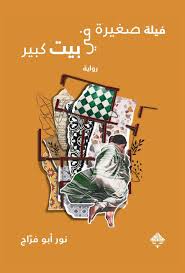
Owned houses and others are rented, fleeting and temporary dwellings, between which the writer moves across different Syrian cities, turning the houses into stations, or rest stops that allow her to contemplate the context of her life, her choices, and the source of her desire to remain between closed doors. The subjective nature of the book turns it into a kind of personal testimony, but Nour Abu Farraj is betting that her memories may intersect to a large degree with the experiences of middle-class young men and women from the 1980s generation in Syria, who lived a relatively stable life, before the war came and made a difference in their context. Forcibly expel them from their safe spaces. In the face of the transience and uncertainty that war brings, description becomes a tribute to the fleeting; This is why the book tries to remind readers of the long time it takes to build a house, in the symbolic or structural sense, but it nonetheless warns them against becoming captives to the place, and encourages them to carry their homes as souvenirs, or small luggage on their long journey.

Cristina Fernandez Cubas does not introduce her heroines to us easily. She takes us on straight paths at first glance, and at one moment, she turns everything upside down. We discover that her characters are torn between two realities, the separation between which is very precise: the fixed reality, and the imagined or delusional reality. . One of them overpowers the other at times, and at other times a reconciliation occurs between them, without us knowing which of them truly exists, and which of them does not exist. “Nona’s Room,” which won the Critics’ Prize in Spain (2015) and the National Narrative Award (2016), is a magnifying glass through which we see the complexities of the human soul and the mystery that surrounds our lives without us always succeeding in observing and understanding it. In it, “Cubas” reconsiders childhood and maturity. And loneliness and family, revealing to us that nothing is really as it seems, writing all of this in transparent language and in a unique style that gives it a detective touch, with skill and lightness.
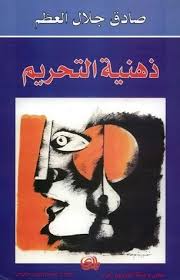
Sadiq Jalal Al-Azm takes the controversy and controversy raised by Salman Rushdie’s book “The Satanic Verses” in the late 1980s as a starting point to address what he calls “the mentality of prohibition and the logic of criminalization” among Arab thinkers, in a panoramic manner, and in other articles - added in later editions of the book - he addresses many of the issues Related issues, such as Orientalism, reverse Orientalism, concepts of cultural invasion, and authenticity. The writer dives behind the implicit meanings, trying to reach the essence, or the real motive behind the issues he discusses, and raises his voice loudly to argue and discuss the opinions of his fellow researchers and intellectuals: such as Edward Said and Adonis. The audacity makes these sober articles an important document of the discussions and dialogues that prevailed among Arab thinkers at that stage, even if one does not agree with any of them. What is important here is the celebration of free thought and debate based on diligence and knowledge. Although the deep, passionate, and enjoyable discussions contained in this book provide many answers, they also stimulate many renewed questions that continue to trouble us and justify our need for readings of this kind.

It is a strange memory, the memory of a child whose grandmother brought her to her home on the island of Majorca, due to the death of her mother, the illness of her nanny, and her father’s busyness. The war surprised her one holiday when she was fourteen. She accurately records in her memory everything she sees, including trees, rocks, sea, air, lights, colors, events, and the echoes of war far and near at the same time, and cowardice, betrayal, and treachery. She records feelings of hatred, revenge, fear, and love, her first love that is devoid of lust due to the absence of instinct. When she becomes a woman, and she is still playing with dolls, her doll is Black Gorogo, the chimney sweep that she brought from afar, from one of Andersen’s stories. So the times mix with each other, and the present moment calls for the near and distant past moment, and the latter may be longer than the first moment because it took its place in the memory and settled, and therefore parentheses, doubles, and abundant details abound without making one feel bored. Because all of this is written in a sublime language and in the style of a first-class writer: Anna Maria Matute. The novel “The First Memory” won the Nadal Prize in 1959, which is one of the most prestigious and prestigious literary awards in Spain.
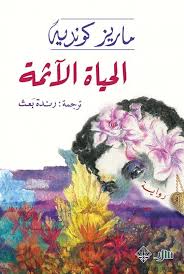
Trying to finally reconcile with a past that has been haunting her throughout her life, Coco tells the story of her family across several generations, starting with the ancestor, Albert Louis, an ambitious man who left his land trying to recreate himself as a man with wealth, passing through his children and grandchildren, and ending with her herself: Coco,” the narrator feels she must tell this tale, and it will be the monument she builds to the dead. It is the debt that must be repaid. A story devoid of great executioners and venerable martyrs, but it will nonetheless have the weight of flesh and blood, because it is the story of its people, of their dreams and hopes, of their delusions, of their failures, and of their complex legacy from which the entire race suffers. “The Sinful Life” is a novel overflowing with interwoven stories and full of details that provide important testimony about the lives of middle-class families in the Caribbean. It was written by Maryse Conde, the Guadeloupe novelist who won the Alternative Nobel Prize in 2018, with infinite sweetness and warmth, based largely on the history of... Her own family. She wrote it as a monument to build for the dead, thus paying off her debt as well.
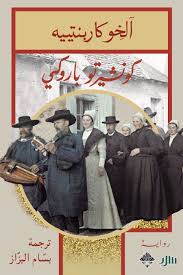
At the Carnival in Venice, a wealthy Mexican meets a person disguised as the last Aztec king of Mexico: Montezuma, who was killed by the Spanish conquistador Hernán Cortés. He also meets three European musical geniuses who filled the history of music with their immortal works: the Venetian Antonio Vivaldi, the Neapolitan Scarlatti, and the English-German. Handel. Did he go back to the eighteenth century? Or did they advance to the twentieth century? In this masterpiece, there is a mixture of truth and fiction, a jump between dates, a mixing of characters and roles, falsification of facts, and skepticism of history, all brought together by Alejo Carpentier within a Baroque concerto in which European music meets African rhythms, and you can imagine the music that resonates within the lines. And the voices that get louder, and the breaths that stop...
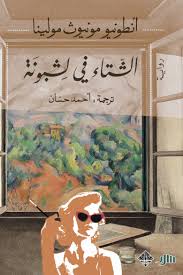
Peralbo plays jazz in Lady Bird, where Lucrezia heard him and became passionate about his music, and he fell in love with its mystery. After a long time, the narrator meets that musician “Peralbo” again, but now he takes the name “Giacomo Dolphin” and lives a different life. What happened during these years? Why did he change his name? What is the story of the stolen painting? Is the title of the song “Lisbon,” which is repeated over and over again, the key to the mysterious past? In the humid rainy streets, in night bars drowned in smoke, and in nights filled with blue and pink lights, and to the rhythm of jazz music, the novel’s heroes strive to understand love, music, and the secret of a city from which there is no point in escaping, because it will follow them to the ends of the world. In this novel, which won the National Prize for Literature and the Critics' Prize in Spain, Antonio Muñoz Molina writes, with a graceful detective plot, a love poem in love with music.
By Shokufa Azar - Translated by: Ghassan Hamdan

After the enthusiastic revolutionaries attacked Hoshanak's house and burned musical instruments, books, and all the things they considered forbidden, he decided to leave Tehran, taking his wife, Rosa, his two sons, Sohrab and Beta, and the third daughter, Bahar, to settle in a distant village, hoping Preserving their intellectual freedom and their lives. But they soon find themselves caught up in the chaos of the 1979 Iranian Islamic Revolution sweeping the country. The fates of all family members change, and they are divided between pain and memory, between the world of the living and the world of the dead, and the times, events, and narrative spaces that “Bahar” narrates intersect, mixing violence and brutality with mysticism, meditation, magic, and myths, invoking oral narrative traditions to confront cruelty with the power of imagination. Shortlisted for the International Booker Prize in 2020, Green Plum Tree's Rise is a fascinating journey through Persian history and mythology, woven in the style of magical realism, exploring the fate of hope and dream in Iran today.
By Alia Trabucco Theran - Translated by: Muhammad Foley

Felipe sees bodies in every corner of Santiago, and seeks to match their numbers with the official death toll, arriving at a perfect number with no survivors. As for "Iquila" and "Paloma", they share the memory of a mysterious and cloudy childhood meeting, and a friendship that linked the parents of one of them with the parents of the other, in the past. The three embark on an unexpected journey to recover the body of Paloma's mother, after she was stuck in Argentina due to volcanic ash. Through a different and new narrative, Alia Trabuco Theran, in her novel that was shortlisted for the International Booker Prize in 2019, tells us about the past that has not passed, about the dark family legacy of the children of those who lived under the Pinochet dictatorship, and about confronting the pain that extends across generations.
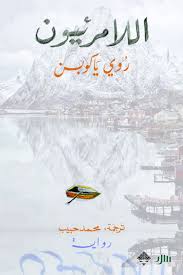
Ingrid Barøy was born on a small island off the northwestern coast of Norway, an island inhabited by only one family, living out their ambitions and dreams that collide with the boundaries of the land and the weather, and the mercy of the sea, which provides a living, but also brings death. Father Hans dreams of building a pier connecting them to the mainland, but contact with the outside world comes at a price, which Ingrid will know fully after she grows up and goes to work there for a wealthy family and take care of her two children. With the couple disappearing one day, she finds no choice but to return to her home with the two children, and thus the island’s population increases in number, and a different life begins, especially as Norway awakens to a wider world, a modern world that is volatile and can be cruel. “The Invisibles” is a profound interrogation of freedom and destiny, written with delicate narration and brief, simple, calm sentences tinged with poetic tensions, creating a painting of natural cinema that makes the “invisible” clearly visible.

Rabbits emerge from jacket sleeves, a car fixes a shed instead of a pole, and medical cotton speaks and makes sounds; These are some of the daily observations mixed with audio-visual hallucinations, narrated by a young drug addict, through a group of separate, connected short stories that describe the image of a world in which wakefulness and sleep are mixed, and reality and imagination. In these stories, everything moves slowly, and the world is seen through a blur; As for death, it seems like a joke, even the feelings become numb; So that one laughs when one should cry. Without lacking a sense of humor and bitter banter, Dennis Johnson presents in this collection an honest testimony about the lives of young addicts in the United States of America, and despite all the laughter and smiles generated by the book’s funny characters with their jokes and behavior, perhaps the reader will wonder at the end: Why does he feel this way? All sadness? It is a book written in the mouth of addicts, not about them, and describes their alienation and their connection with the world that is gradually fading.

Hiding behind the identity of a mysterious orientalist, a young American comes to Jabal al-Arab, moves between the villages of Suwayda, and then continues his journey to Latakia. To complete the threads of a miraculous story he heard and became a party to, let us read it partly from the pages of the orientalist’s memoirs, and hear it partly from the tongues of people who lived it. The Jabal al-Arab region continues to generate stories that tell of the harshness of life, social injustice, and the tyranny of customs and traditions that strangle the fates of heroes. But just as there are “pashas” and “maraba’un” in the mountain, there are “pashas” and “peasants” in other places. With the conflict between all of these people, falling in love becomes an adventure with unknown consequences. In his novel, Rabih Murshid delves deeply into the oral heritage of his environment, employing its myths, songs, and poems arranged within graceful and interesting narrative templates, to tell a love story between two people riding on horseback and trying to conquer fear by singing.

Using diminutive names, such as: “Soso” or “Koba,” Arrabal addresses the leader Joseph Stalin through a long, sarcastic and indignant message, dropping from him the qualities of greatness and deification, so that he returns to a child who deserves rebuke. Employing his huge and diverse intellectual reserve, Arrabal delves into the details of Stalin’s life, starting from his famous mustache, passing through the women in his life, the spies and henchmen who worked for him, and the poets who immortalized him in weak verses, all the way to his victims, who were many, inside and outside the Soviet Union, and with Therefore, Arrabal does not reveal the sources of his information, nor does he differentiate between facts and fabricated details. He does not seek to present a truly historical document as much as he is interested in formulating a dialectical and moral argument. Unlike his letter to General Franco, which he sent to the latter while he was alive, writing to a dead dictator may seem like an absurd and useless act, but Arrabal is in fact directing his letter to the living who lived with Stalin, or were influenced by him later, and he is trying in his letter, which seems Closer to a plea in a court; To say: History is unforgettable and cannot be erased.

The best way to understand Bakunin suggests looking at what he wrote, and what he did, as part of a libertarian movement within the socialist movement and thought, and the main disagreement between him and Marx centered around the concept of authority and freedom. Regarding this point, Bakunin presented a set of ideas: on organization and revolution, and human nature, Criticism of the concepts of the social contract, the state, democracy, and elections; Marxism and liberalism are interconnected, intertwined, and transcend - in an amazing way - both; This is Bakunin's main intellectual contribution. Bakunin believes that all authorities are illegitimate, and that freedom is the main condition for human development. Before we present the details of his vision, we must clarify that Bakunin did not reject all authorities absolutely, and that anarchism is not chaos. Anarchism was subjected to a ruthless campaign to distort it, led by its companions: Marxists first, then liberals, and of course those with traditional authority, but it is an unjust campaign. In fact, Bakunin distinguishes between authority that does not emanate from below, but is imposed on people, and authority that consists of Below, in an organic and natural way, and it exercises its influence within specific and temporary limits.

Another postman from Scarmita, but this time he was found in Nicaragua; To be a witness to the last weeks that paved the way for the fall of “Somutha,” the last dictator of Nicaragua. In those decisive moments, the residents of the city of Leon are divided between a majority supportive of the rebels led by Augusto Cesar Sandino, and a minority loyal to the regime and its soldiers. Among them, Scarmita creates a special magical world. The postman decides Letters carrying news of death are better not to arrive, and the oldest woman in the city pretends to be an old widow. To cover up her political activity, the beautiful Vicki shouts in the face of the military, and with them we see the priest, the barber, and others, inventing their own “Trojan horse” to make the rebellion successful and take control of the city. Through a text that has multiple rhythms and narrative styles, and is full of metaphors, Scarmetta shows how a single event can differ in its impact and meaning depending on the angle from which it is viewed. For some, loss and defeat become a victory and an unforgettable moment for others. In this work, Scarmeta carries the concerns of Nicaragua; Because for him, the struggle against dictatorships is the same regardless of place.

Enter your address and we will specify the offer for your area.